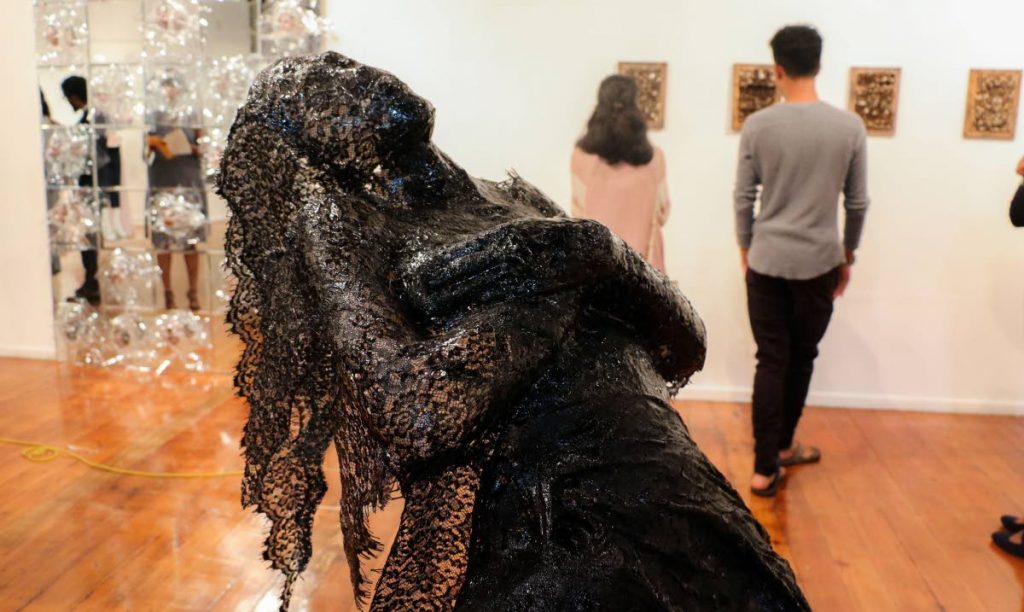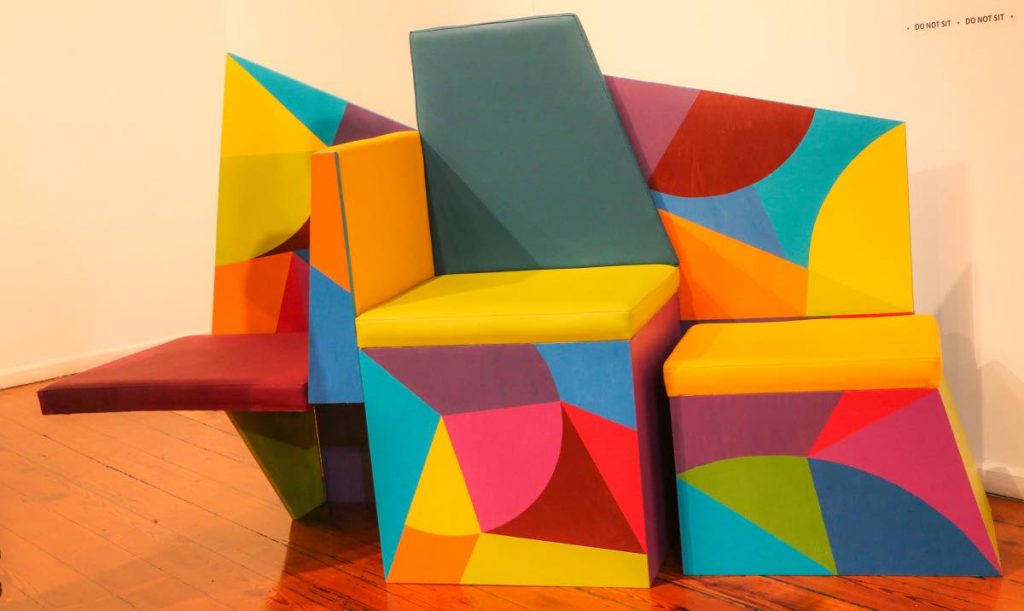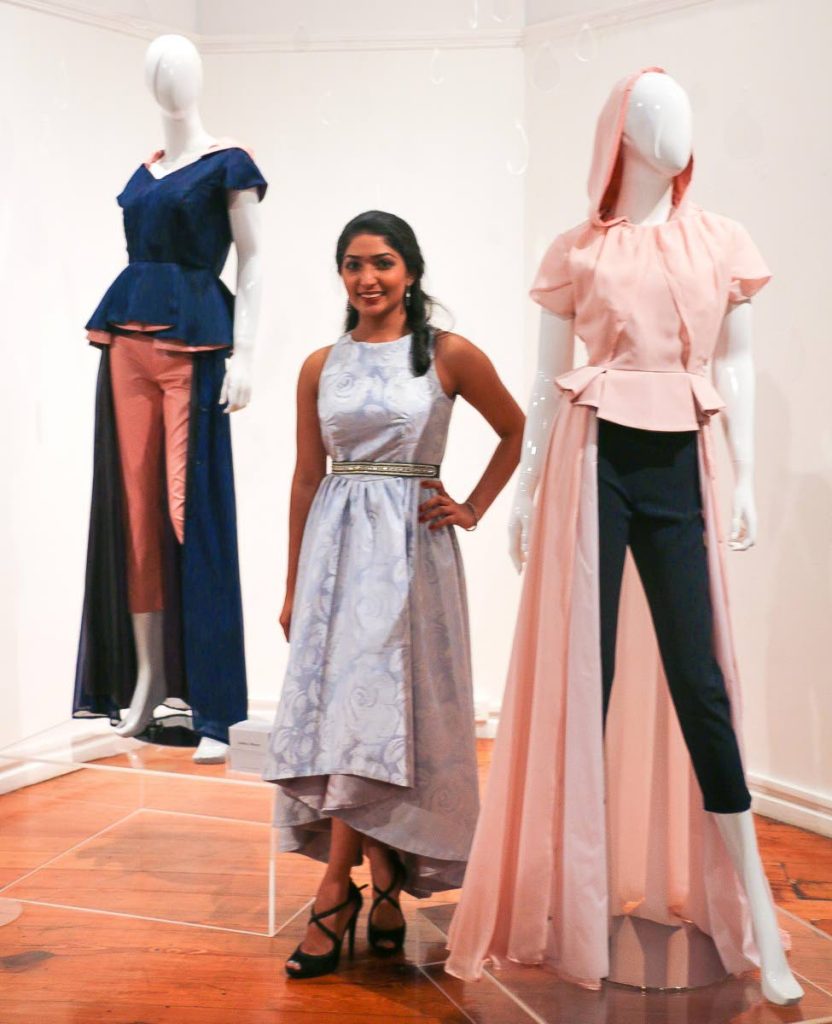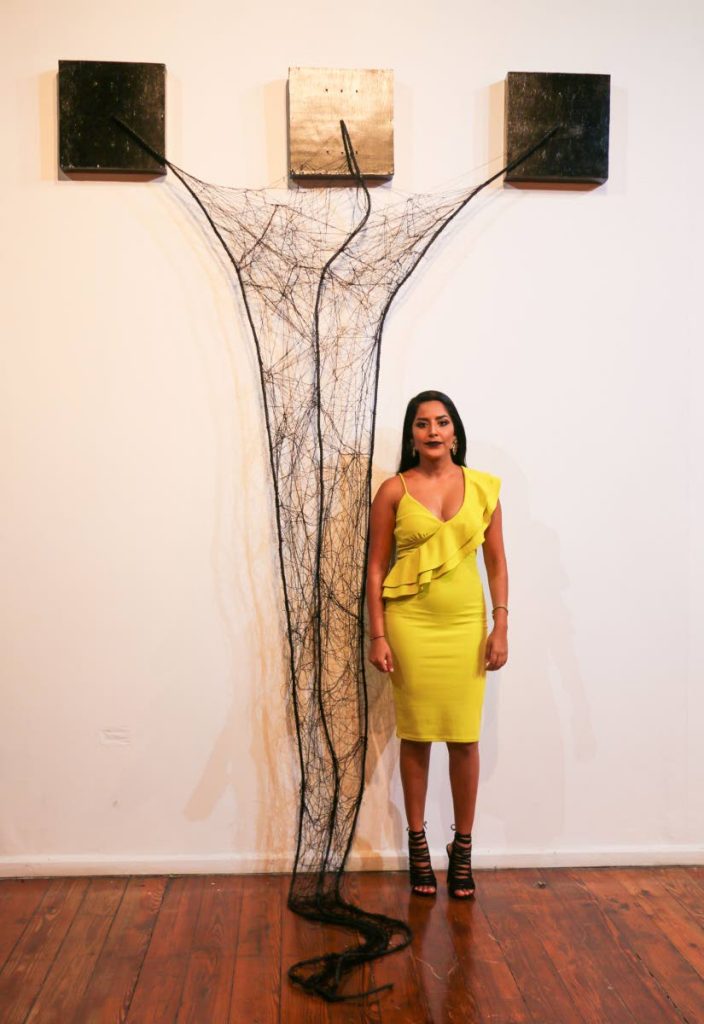Fine art

TWENTY-FOUR students from the University of the West Indies (UWI) showcased their creative and futuristic art pieces on April 4 at the National Museum, Port of Spain.
The exhibition, held by UWI Department of Creative and Festival Arts (DCFA), Visual Arts Unit consisted of work done by the 2018 graduating class of the BA in Visual Arts. UWI’s Visual Arts programme consists of two subsets, Fine Art and Design.
Students drew inspiration from their personal experiences, current events and mental illness to create bold and engaging pieces. Many supporters and art critics were in attendance.
UWI Fine Art lecturer Nikolai Noel said what was apparent on opening night was the depth of thought and investigation students put into their individual interests, and how they managed to come up with a visual object that would convey their ideas. “They did a lot of work and it pays off,” said Noel.
DCFA lecturer Steve Ouditt commended students for their hard work. “We have been here at the National Museum for the past four years and the show keeps getting better,” Ouditt said.
Ouditt and Noel co-teach the fine art year-long programme, which is filled with two rigorous courses.
“We decided to co-teach and this is unique because in merging our classes together we found that instead of student numbers dwindling, we got a thrilling response from all our students and they persevered to the end,” said Ouditt.

Among the captivating work showcased was Destinee Walcott’s piece Burnt out cigarettes. The 24-year-old student told Sunday Newsday she collected 4,004 used cigarettes on campus over three months. “I decided to conduct several experiments on my daily commutes to and from UWI, because walking acts as a means for exploration, interpretation and observation. I became an observer of all the environs. This process of walking led me to the gathering, cataloguing and arrangement of the cigarettes,” said Walcott.
“My piece privileges what we so often quickly discard, giving life to something that was literally sucked out, highlight it and give it a new meaning.”
Walcott aims at challenging various ideas and introducing a different element within the museum space while using something that is familiar to everyone, and everywhere. Walcott’s piece was used as the art work promoting this year’s student exhibition.
Sharon Vidale’s piece, Centibus Parasitica Incessabilis Delicti, which is Latin for Parasitic Malediction is made up of mirrors, plastic and ink. Her inspiration came from an interest in how people in leadership positions who are supposed to be transparent get into situations where they become corrupt. “Under what conditions do people become corrupt? What crippling effect does corruption have on the development of a nation? My piece is all about corruption,” said Vidale.

She explained that the idea with the plastic is transparency, the distortion of the faces on the plastic represents the distortion of the human psyche, and the reason for the mirrors is to evaluate what line is drawn to separate us from becoming corrupt. “In what situation would I become distorted or stick to my morals?” Her piece included the distorted images of regional and local leaders.
“The use of plastic serves as a metaphor to express the transformation of individuals who we have given the power to represent our interest; in whom we have put our faith to be transparent and our complete trust in what they represent; but have succumbed to the toxic environment in which they find themselves or even became intoxicated with power.”
Twenty-six-year-old Sarah Josanne Katwaroo’s two pieces titled State of Mind One and State of Mind Two focused on the impact of emotional abuse which has shaped her life and relationships. Her pieces were made out of wood, rope, wool, thread and paint. “I have found that throughout my journey of self-realisation I have within me emptiness, darkness and rage which are effects of emotional abuse. Through my art I explore love, hate, pain, anger, outbursts and containments of feelings, self-perception and self-doubt,” said Katwaroo.

Her pieces take on an abstract quality involving the weaving, knotting and webbing of rope, wool and thread on the wooden surface to “investigate complexities of emotions to confront conflicts of connections and disconnections and to capture states of minds.”
One design student portrayed her ideas quite boldly when she created the Battimamzelle Activity Book. Kadine Antoine, 31, was prompted with the idea to create a journal/activity book after the suicide of a local teenage girl. “I wanted to look at depression and mental illness among teenage girls and ways that I can help. The journal has activities where teenagers can draw, write and paint as a means to get their emotions out in a creative way,” said Antoine.
The journal was created using paper, fabric, fabric paint, sponge and wire and was inspired by The Butterfly Movement and other movements devoted to treating such illnesses as anorexia, binge eating and bulimia. “The battimamzelle (dragonfly) is supposed to enchant and calm the reader.”
Tevin M Charles, a 21-year-old design student, created Depth of Field-The Reflection out of plexiglass, reflective tint, plywood and RGB LEDS.
Depth of Field sought to explore the conceptual aspect of design; designing towards a particular experience for the consumer instead of around a product. “I’m following the belief that experiences lead to memories and memories last and imprint on a person. My work is a sensory experience that aims to immerse the viewer in a futuristic display of lights and challenge their understanding of space through the use of optical illusions,” said Charles.
Ishtika Bharat, 24, created the Rainy Season 2018 Collection: Hyacinths in which she incorporated silnylon, Georgette and polished cotton. The two-piece collection comprised of water-resistant, reversible clothing that can be transformed into multiple styles to suit the two seasons in the Caribbean. “In the global market where everyone follows their seasonal fashion we should do the same,” said Bharat.
“The pieces themselves are fully water resistant because they aim towards rainy season fashion, and I wanted to do something that is rainy season fashion because it’s something unique to us in the Caribbean, because we have two seasons.”
Even though her clothing is geared towards a young female audience Bharat aims to personalise and expand Caribbean fashion beyond Caribbean-inspired prints and resort wear.
“Through my work, I’d like to impact the way Caribbean fashion is viewed and by extension would like to develop our style of dressing into something that is uniquely Caribbean.”


Comments
"Fine art"